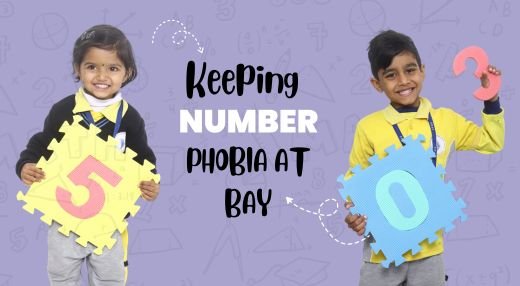As an education institute, our goal for students is to be literate in mathematics so that we can prepare them for a world where the subject is rapidly growing and is extensively applied to a diverse number of fields.
The traditional pattern of teaching involves balanced instruction that’s focused on enabling children
and teachers to achieve success at school. Today, the focus is for students to achieve college and career readiness in life beyond school.
This new pattern expects that students:
· Construct their own understandings
· Apply prior knowledge and skills
· Are consistently challenged
· Take risks
· See purpose in what they learn
We keep on exploring the question: “How can we improve the student learning experience?”
Based on our observation of students learning patterns, we have zeroed in on a few methodologies:
- Learning by Doing: – Children understand the outcome best when they can visualise the result.
- Learning through Games- The aim is to make mathematics engaging and fun for our kids.
- Math Talk- Kids love to talk. Therefore, it is essential to engage them in conversations. A child needs to talk. Sometimes just a favourable environment acts as the best remedy for “math fear”. A child must feel free to share. Even if the talk doesn’t involve calculations or formulas, it is still relevant. This way the child will be able to break the wall built around him or her.
- Following engaging routines- This is one field, where parents and teachers have to join hands.
Sometimes a little repetition is not a bad thing. We have noticed one thing that kids love routines (even if
they fight against them sometimes). Routines will help to use the time optimally as students are aware
about the expectations. As long as we keep the routines engaging, students will be tuned in and look
forward to more.
What is Phobia
Phobia is loosely defined as the excessive and unrealistic fear of an object, person, animal,
activity or situation. Math is a “4 letter” subject which evokes emotions ranging from dislike and anxiety to
outright fear in students. Lets learn how to effectively deal with Math phobia.
Step 1 – Recognize the Phobia
The first step is to recognize Phobia. Does the child feel underconfident and scared to approach a Math question just by looking at it? Does the child feel paranoid about not being able to understand the solutions? Does the child panic when they see Math quizzes, homework, or assignments?
Step 2 Acknowledge
As with most phobias and addictions, the first step to treatment is admitting the problem. We as parents and teachers, should learn to acknowledge the phobia in our children.
Step 3 – Take steps to improve it
We should encourage our children to ask for help. Try to understand the child’s learning style. Is it more of an oratory or audio or visual? Once this has been identified, we need to make learning fun for children. This can be done by including games and puzzles. Brain teasers really help step up the game.
Step 4 – Encourage to ask questions
We as educators must learn to build a bond with our children and encourage them to ask questions without feeling embarrassed about doing so. We need to instil in children that asking questions not only helps them understand the question better but also helps them find specific solutions to their doubts.
Step 5 – solve easy questions first
Another way to help children to overcome their phobia is to first give them easier problems to solve and then gradually give them difficult ones. This helps build their confidence and encourages them to take on more difficult topics with ease.
Step 6 – Reward
Acknowledge and reward children for their hard work and help them gain confidence. Timely rewards only help build their confidence and encourage them to learn more.


